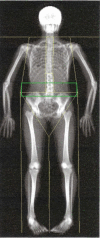The clinical importance of visceral adiposity: a critical review of methods for visceral adipose tissue analysis
- PMID: 21937614
- PMCID: PMC3473928
- DOI: 10.1259/bjr/38447238
The clinical importance of visceral adiposity: a critical review of methods for visceral adipose tissue analysis
Abstract
As a result of the rising epidemic of obesity, understanding body fat distribution and its clinical implications is critical to timely treatment. Visceral adipose tissue is a hormonally active component of total body fat, which possesses unique biochemical characteristics that influence several normal and pathological processes in the human body. Abnormally high deposition of visceral adipose tissue is known as visceral obesity. This body composition phenotype is associated with medical disorders such as metabolic syndrome, cardiovascular disease and several malignancies including prostate, breast and colorectal cancers. Quantitative assessment of visceral obesity is important for evaluating the potential risk of development of these pathologies, as well as providing an accurate prognosis. This review aims to compare different methods of measuring visceral adiposity with emphasis on their advantages and drawbacks in clinical practice.
Figures




References
-
- An P, Rice T, Borecki IB, Pérusse L, Gagnon J, Leon AS, et al. Major gene effect on subcutaneous fat distribution in a sedentary population and its response to exercise training: the Heritage Family Study. Am J Human Bio 2000;12:600–9 - PubMed
-
- Wu CH, Yao WJ, Lu FH, Yang YC, Wu JS, Chang CJ, et al. Sex differences of body fat distribution and cardiovascular dysmetabolic factors in old age. Age Ageing 2001;30:331–6 - PubMed
-
- Kyle UG, Genton L, Hans D, Karsegard L, Slosman DO, Pichard C. Age-related differences in fat-free mass, skeletal muscle, body cell mass and fat mass between 18 and 94 years. Eur J Clin Nut 2001;55:663–72 - PubMed
-
- Ramos deMarins VM, Varnier Almeida RM, Pereira RA, Barros MB. Factors associated with overweight and central body fat in the city of Rio de Janeiro: results of a two-stage random sampling survey. Public Health 2001;115:236–42 - PubMed
-
- Evans EM, Van Pelt RE, Binder EF, Williams DB, Ehsani AA, Kohrt WM. Effects of HRT and exercise training on insulin action, glucose tolerance, and body composition in older women. J Appl Physiol 2001;90:2033–40 - PubMed
Publication types
MeSH terms
LinkOut - more resources
Full Text Sources
Other Literature Sources
Medical
Research Materials

